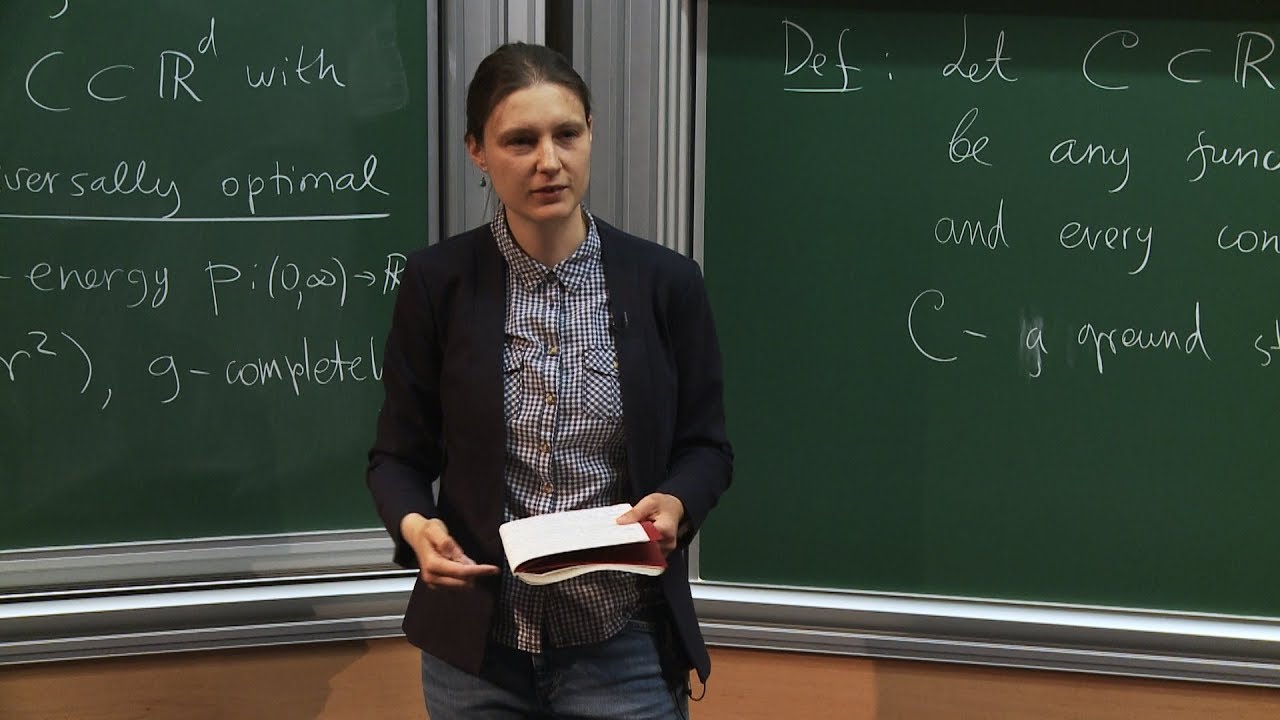She found the best mathematical way to arrange oranges in a crate: Who is Maryna Viazovska?
The Fields Medal is one of the most prestigious awards in mathematics. It is awarded every four years to four mathematicians under the age of 40. In 2022, one of these four mathematicians was Ukrainian number theorist Maryna Viazovska.

She also became the second woman to win this award, which was first given in 1936. Before Viazovska, the only female mathematician to win the Fields Medal was Maryam Mirzakhani in 2014.
Other winners of the 2022 Fields Medal were determined as number theorist James Maynard, combinatorics expert June Huh and statistical physicist Hugo Duminil-Copin. Viazovska, based at the Swiss Federal Institute of Technology (EPFL) in Lausanne, won this award for solving the problem of how to package spheres most efficiently.
Meanwhile, the fact that the winner of the award is a Ukrainian will raise a certain question mark in mind. A similar question was asked to her. “I was chosen as the winner before Russia's invasion of Ukraine began. “I believe this decision is about math and nothing else – that's the way it should be,” she said.
Maryna Sergiivna Viazovska (born 2 December 1984) is a Ukrainian mathematician known for her work in sphere packing. She is a full professor and Chair of Number Theory at the Institute of Mathematics of the École Polytechnique Fédérale de Lausanne in Switzerland. She was awarded the Fields Medal in 2022.
Just weeks after Maryna Viazovska learned she had won the Fields Medal, the highest honor for a mathematician, Russian tanks and warplanes began attacking her hometown of Kiev.
Although she did not live in Ukraine, her family was still there. Even though she managed to bring her parents to her in the future, some of her family would refuse. As a result, she was in such an emotional predicament when she received the award.
Who is Maryna Viazovska?
Viazovska was born in Kiev in 1984. In Ukraine, she studied at the Taras Shevchenko National University in Kiev before receiving her master's and doctorate degrees at the University of Kaiserslautern in Germany.
During her student years, she competed in International Mathematics Competitions in 2002, 2003, 2004 and 2005. She was one of the first place winners in 2002 and 2005. She has been head of the number theory department at the Ecole Polytechnique Federale de Lausanne since 2018. She is also married and the mother of two children.
Viazovska was awarded the Fields Medal for a groundbreaking proof of a problem familiar from everyday life: When you put round things like oranges in a box, there will always be gaps between them. This raises a geometric question: How should you place spheres in a box to fit as many spheres as possible?
This theorem, known as the Kepler conjecture, was named after the 17th century mathematician and astronomer Johannes Kepler (1571-1630). Kepler suggested that this should be in the same way as we see in the example of greengrocers hoarding oranges. He wrote that the density as a result of such packaging was approximately 74%, but he did not prove it.
The Kepler conjecture was not fully answered until 1998, when Thomas Hales and his student Samuel Fargison performed a computer-assisted proof. The final evidence amounted to 250 pages and contained three gigabytes of data. For nearly four years, a team of experts examined the accuracy of the proof.
However, the calculations were so complex that it was eventually decided that it was not possible to verify their accuracy. As a result, it was accepted that Kepler was right.
Viaszovska's work deals with a similar problem in higher dimensions. It is of course not possible to visualize higher dimensional spheres. But this won't be a problem for mathematicians. There are other ways to define them.
With these methods, Viazovska answered the question for sizes 8 and 24. As a result, it was revealed that in the 8th dimension, you can fill at most about 25% of the space with hyperspheres, called higher dimensional spheres. In 24 dimensions, the rate was 0.1%.
You may have wondered what makes the 8th and 24th dimensions special. In fact, Viazovska does not know the exact answer to this question. “We have two extremely cool configurations in these dimensions that we don't have in other dimensions. They are so good that methods that fail in all other dimensions give an accurate estimate in these dimensions. "If you ask why, I don't know."
